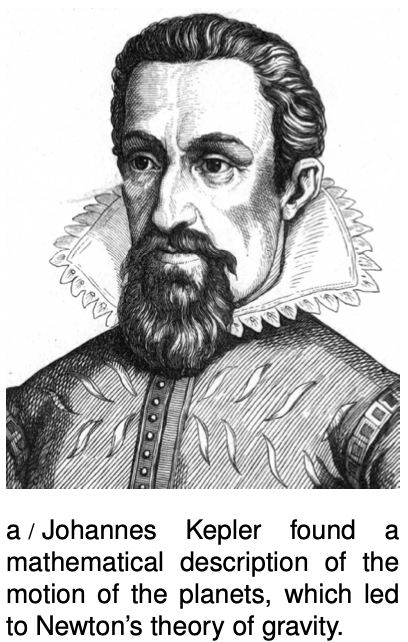LM 10_0 Gravity Collection
10. Gravity by Benjamin Crowell, Light and Matter licensed under the Creative Commons Attribution-ShareAlike license.
Chapter 10. Gravity
 Cruise your radio dial today and try to find any popular song that would have been imaginable without Louis Armstrong. By introducing solo improvisation into jazz, Armstrong took apart the jigsaw puzzle of popular music and fit the pieces back together in a different way. In the same way, Newton reassembled our view of the universe. Consider the titles of some recent physics books written for the general reader: The God Particle, Dreams of a Final Theory. Without Newton, such attempts at universal understanding would not merely have seemed a little pretentious, they simply would not have occurred to anyone.
Cruise your radio dial today and try to find any popular song that would have been imaginable without Louis Armstrong. By introducing solo improvisation into jazz, Armstrong took apart the jigsaw puzzle of popular music and fit the pieces back together in a different way. In the same way, Newton reassembled our view of the universe. Consider the titles of some recent physics books written for the general reader: The God Particle, Dreams of a Final Theory. Without Newton, such attempts at universal understanding would not merely have seemed a little pretentious, they simply would not have occurred to anyone.
This chapter is about Newton's theory of gravity, which he used to explain the motion of the planets as they orbited the sun. Whereas this book has concentrated on Newton's laws of motion, leaving gravity as a dessert, Newton tosses off the laws of motion in the first 20 pages of the Principia Mathematica and then spends the next 130 discussing the motion of the planets. Clearly he saw this as the crucial scientific focus of his work. Why? Because in it he showed that the same laws of motion applied to the heavens as to the earth, and that the gravitational force that made an apple fall was the same as the force that kept the earth's motion from carrying it away from the sun. What was radical about Newton was not his laws of motion but his concept of a universal science of physics.
10. Gravity by Benjamin Crowell, Light and Matter licensed under the Creative Commons Attribution-ShareAlike license.
Calculators and Collections
- Comments
- Attachments
- Stats
No comments |
